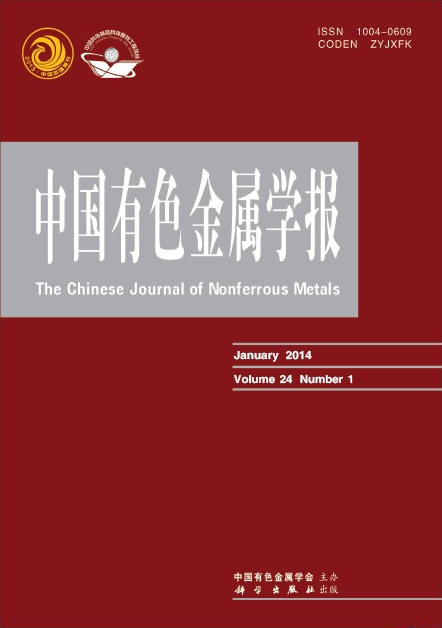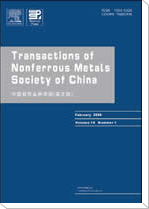中国有色金属学报(英文版)
Transactions of Nonferrous Metals Society of China
| Vol. 35 No. 8 August 2025 |
(School of Materials Science and Engineering, North University of China, Taiyuan 030051, China)
Abstract:A Mg-13Gd-4Y-2Zn-0.5Zr (wt.%) alloy was selected as the experimental material. After preheating, initial microstructures with different long-period stacking ordered (LPSO) phase and β'''' phase distributions were obtained, and hot compression experiments were conducted. The effects of secondary phases on microstructure and dynamic recrystallization (DRX) behavior were investigated. The results revealed that the average grain size decreased from 70.93 to 31.53 μm, and the DRX volume fraction increased from 20.3% to 40.1% after the pre-annealing treatment. The average grain size of Sample S0 (pre-aging) decreased to 39.29 μm, and the DRX volume fraction increased by 79.8%, whereas the average grain size of Samples S1-S7 (pre-annealing + aging) slightly increased, and the DRX volume fraction slightly decreased. With increasing pre-annealing time, the width of the lamellar LPSO phase increased, which generated less dynamic precipitation during deformation and weakened the pinning effect. The DRX mechanism transformed from continuous dynamic recrystallization (CDRX, pre-homogenization sample) to particle-stimulated nucleation (PSN) + discontinuous dynamic recrystallization (DDRX, pre-annealing sample). After the pre-aging treatment, the reticular structure effectively pinned the dislocations and delayed the nucleation and growth of DRX grains. The DRX mechanism changed from the original CDRX+PSN (pre-aging sample) to DDRX (pre-annealing + aging sample).
Key words: Mg-Gd-Y-Zn-Zr alloy; dynamic recrystallization; hot compression; β'' phase; LPSO phase


